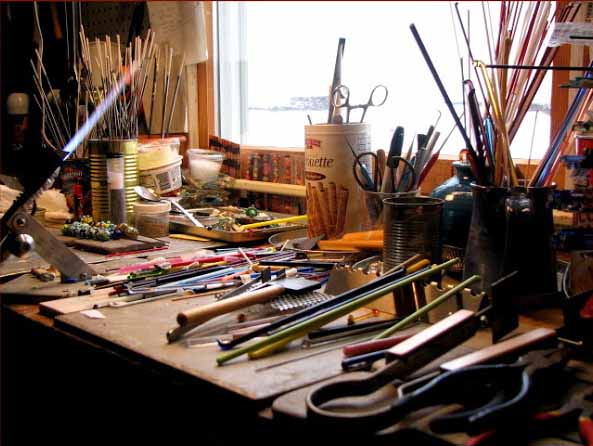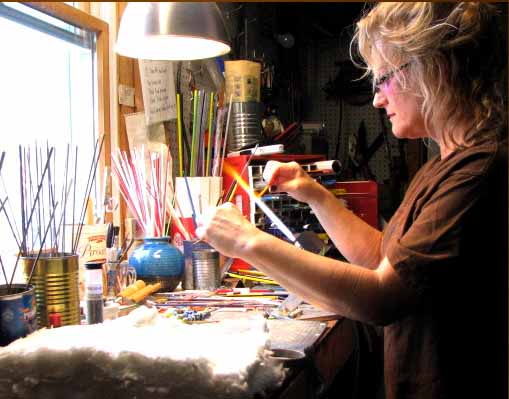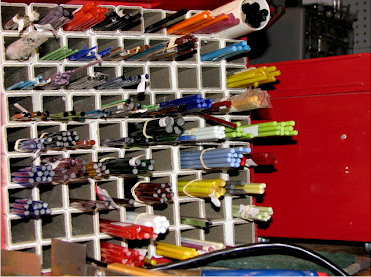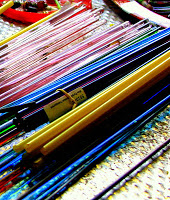The Brooklyn Bead Goddess:
Making Glass Beads Demo
April, The Brooklyn Bead Goddess makes her own beads by melting glass in a torch flame. Adding designs and colors makes her work unique. Lampwork or flamework designing takes time and patience, which is why it is so special.
Watch the Brooklyn Bead Goddess, April Grinaway making glass beads with her torch in this lampwork demo.
|
The black square near the flame
is a graphite marver which she uses to shape the bead. The big silver metal cone in
front of the flame is the exhaust fan. In the distance is a digital
kiln. It looks like a tool box and is called The Chilli Pepper Kiln. |
Creating
glass beads takes time, patience and practice. When April sits down to make a
bead, her mind only concentrates on what she's doing. Every color of glass
reacts differently in the flame. Making glass beads reminds me of
painting with oil paints. The colors blend together in their own unique
way and you must go with the flow to achieve a certain look. |
She enjoys that same feeling when she sits down at the torch. She never knows what she'll create. It depends so much on her mood, the glass and timing. Everything has to be in sync. It's always a learning experience. She not only learn about glass but she learn about her self too. That's why she loves it. |
This is her work bench
area-torch, tools, glass.

Lampworking differs from glassblowing in that glassblowing utilizes a blowpipe to inflate a glass blob known as a gather, thereby inflating it by blowing air into the blowpipe, whereas, lampworking manipulates glass either by the use of tools, gravity, or by blowing directly into the end of a glass tube.
|
Mandrels are first dipped in a clay like bead release coating which keeps the bead from sticking. |
Knowing how the colors react to heat takes practice. |
Here April heats a rod of glass in the torch flame onto a steel rod called a mandrel.
 |
Close up of her torch with glass rods in the background. |
She uses both hands to start the process. One to hold the glass rod and the
other to hold the steel mandrel. Constantly rotating both the rod and
the mandrel balances the molten glass. It's kind of like patting your
head and rubbing your stomach at the same time.
 Glass rods neatly organized |
 |
Rods of glass are sold in a wide selection of colors. She uses soft glass 104 coe. (Coefficient of Expansion) Whatever glass she can experiment with - she's worked with German Lauscha, Italian Effetre Moretti, Vetrofond and Creation is Messy.

They call this kiln the Chile Pepper.
When she has finished designing each bead on a mandrel, she places them directly in the kiln. When
the beads are cool, the final step is to clean the bead and release it from
the hole. Using a drill with a diamond bit, she carefully cleans each bead
and inspects them for imperfections.
It's a long process to make a bead!